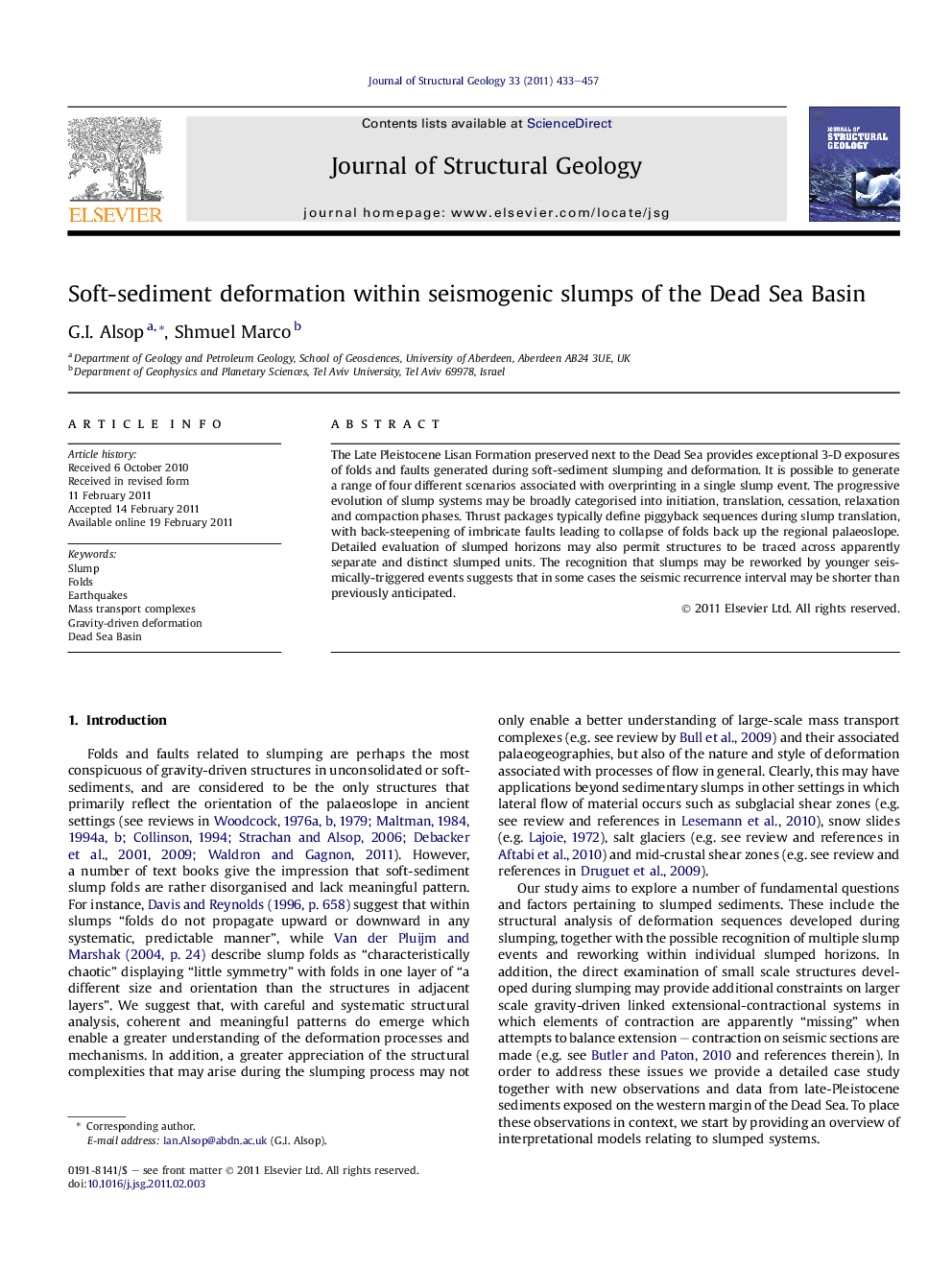| Article ID | Journal | Published Year | Pages | File Type |
|---|---|---|---|---|
| 4733363 | Journal of Structural Geology | 2011 | 25 Pages |
The Late Pleistocene Lisan Formation preserved next to the Dead Sea provides exceptional 3-D exposures of folds and faults generated during soft-sediment slumping and deformation. It is possible to generate a range of four different scenarios associated with overprinting in a single slump event. The progressive evolution of slump systems may be broadly categorised into initiation, translation, cessation, relaxation and compaction phases. Thrust packages typically define piggyback sequences during slump translation, with back-steepening of imbricate faults leading to collapse of folds back up the regional palaeoslope. Detailed evaluation of slumped horizons may also permit structures to be traced across apparently separate and distinct slumped units. The recognition that slumps may be reworked by younger seismically-triggered events suggests that in some cases the seismic recurrence interval may be shorter than previously anticipated.
Graphical abstractFigure optionsDownload full-size imageDownload high-quality image (219 K)Download as PowerPoint slideHighlights► We provide detailed descriptions of fold and thrust systems developed in seismogenic sedimentary slumps with special reference to the Dead sea Basin (photo). ► A range of four different overprinting scenarios may be generated in a single slump event. ► Slump evolution may be categorised into initiation, translation, cessation, relaxation and compaction phases. ► Early layer-parallel shortening coupled with out of plane movement marked by slump-parallel faulting may help account for “missing” contraction when balancing large –scale mass transfer complexes (MTC’s). ► We provide the first detailed evidence that slumps may be reworked by younger seismically-triggered events. ► Up to 10% of slumps may conceal multiple seismic events suggesting that seismic recurrence intervals may be shorter than previously realised.
